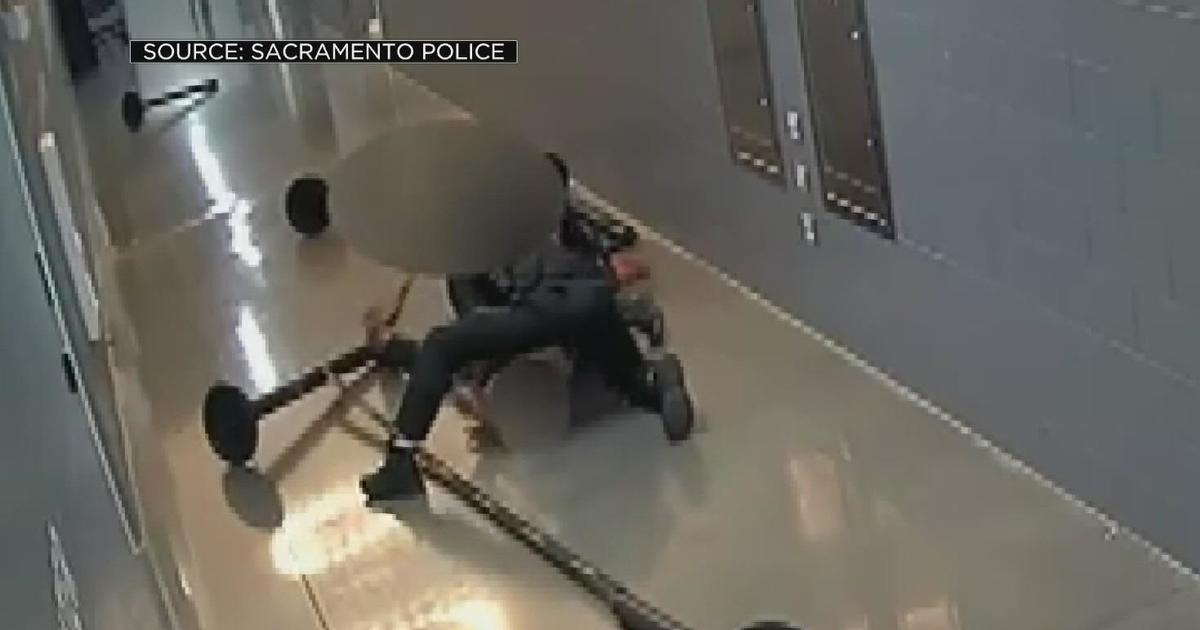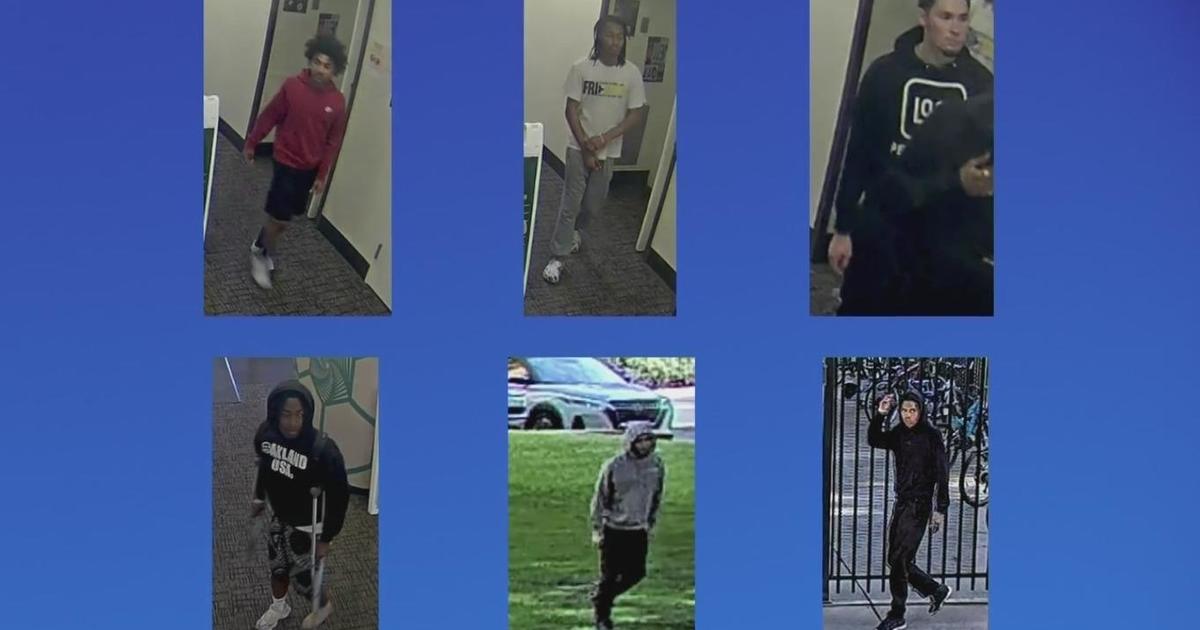National Debate: Was Pepper-Spraying Of UC Davis Protesters Justified?
SAN FRANCISCO (AP/CBS13) — CBS13's video and cellphone footage of riot police repeatedly pepper-spraying a row of seated, non-violent Occupy Wall Street protesters at UC Davis have sparked outrage, an investigation and calls for the college chancellor's resignation.
The footage also set off a debate about how far law enforcement can and should go to disperse peaceful demonstrators.
Many students, lawmakers and even the university's chancellor have called the officers' actions a horrific example of unnecessary force. But some experts on police tactics say, depending on the circumstances, pepper spray can be more effective to de-escalate a tense situation than dragging off protesters or swinging at them with truncheons.
"Between verbalized commands and knock-down, drag-out fights, there's quite a bit of wiggle room," said David Klinger, a former Los Angeles Police Department officer and instructor at the University of Missouri-St. Louis who reviewed the pepper spray footage.
Former Sacramento County Sheriff John McGinness told CBS13 that if the protesters were warned in advance -- and the department's policy specifies they should have been -- police had every right to use the pepper spray.
"If that was communicated to them and they had full warning, they in effect saw the high-voltage warning and decided to reach out and touch it," McGinness said.
He also said you have to weigh the motive of the protesters.
"You have to consider the probability that this was the end game of the protesters," he said. "In other words, that they wanted to be arrested."
The footage of an officer casually spraying an orange cloud at protesters' heads while spectators screamed in horror joined other much-discussed pepper-spray incidents, such as the 84-year-old activist hit in the face in Seattle and a Portland, Ore., woman who recently was sprayed in the mouth.
Images of the officer seen dousing the students became the subject of a blog, which featured him spraying famous figures, from Gandhi to John F. Kennedy.
The university announced Monday that it has placed the police chief and two officers on administrative leave to restore trust and calm.
Still, nearly 2,000 students and residents gathered at the main quad to hear speeches and chant slogans against police and university officials. Students who were pepper-sprayed opened the rally, saying they felt unsafe on campus with the chancellor in power.
"We were just kids sitting down in a circle singing," said student David Buscho, 22, of San Rafael. "It felt like hot glass ... I was paralyzed with fear."
Pepper spray is an inflammatory agent that derives its active ingredient from chili peppers. When the spray is deployed, it causes nearly instant inflammation, resulting in dilation of the capillaries in the eyes, paralysis of the larynx and a burning sensation on the skin.
Buscho said students were yelling at police Friday that they were peacefully protesting. One of the helmeted officers began pointing a spray can at close range on the seated group, he said.
"I had my arms around my girlfriend. I just kissed her on the forehead and then he sprayed us," he said. "Immediately, we were blinded ... He just sprayed us again and again and we were completely powerless to do anything."
The protest was held in support of the Occupy Wall Street movement and in solidarity with protesters at the UC Berkeley who were struck by police with batons on Nov. 9.
The spraying has reverberated far beyond the university, spawning a debate about the officers' use of force.
Decisions on using pepper spray range by department and depends largely on the community and the police chief, Klinger said.
Klinger said the officers could have turned to other methods, such as a so-called pain compliance hold, but that would bring its own set of complications. A protester could receive a broken arm, he said, or an officer could pull a muscle.
Charles J. Key, a former lieutenant with the Baltimore Police Department who wrote the department's use-of-force manual, said that officers were clearly within their rights to use it.
After reviewing the footage, Key said he observed at least two cases of protesters actively resisting police. In one, a woman pulls her arm back from an officer. In the second, a protester curls into a ball. Each of those actions could have warranted more force, including baton strikes and pressure-point techniques, he said.
"What I'm looking at is fairly standard police procedure," Key said.
The federal courts have ruled on such cases. At the 9th U.S. Circuit Court of Appeals, which covers courts in nine western states, the cases have centered on whether or not the protesters were involved in what is called "active resistance."
The court used the term in considering a case about another highly circulated video of a group of passive demonstrators being swabbed with pepper spray in 1997. The protesters had linked arms on the floor of a California congressman's office to protest the logging of old-growth redwood trees on California's North Coast.
Because demonstrators were using a metal sleeve to prevent the county sheriff's office from separating them, attorneys argued the protestors' "active resistance" left officers no other way to disperse them than dabbing their eyelids with Q-tips soaked in pepper spray, said Jim Wheaton, an attorney who assisted in the prosecution of the civil case.
The 9th Circuit ruled that the protesters weren't in "active resistance," and because they were sitting peacefully, the use of pepper spray was excessive.
"Pepper spray is designed to protect people from a violent attack, to stop somebody from doing something," said Wheaton, senior counsel for the Oakland-based First Amendment Project.
UC Davis police used "it as a torture device to force someone to do something, and that's exactly what the 9th Circuit said was unreasonable and excessive."



